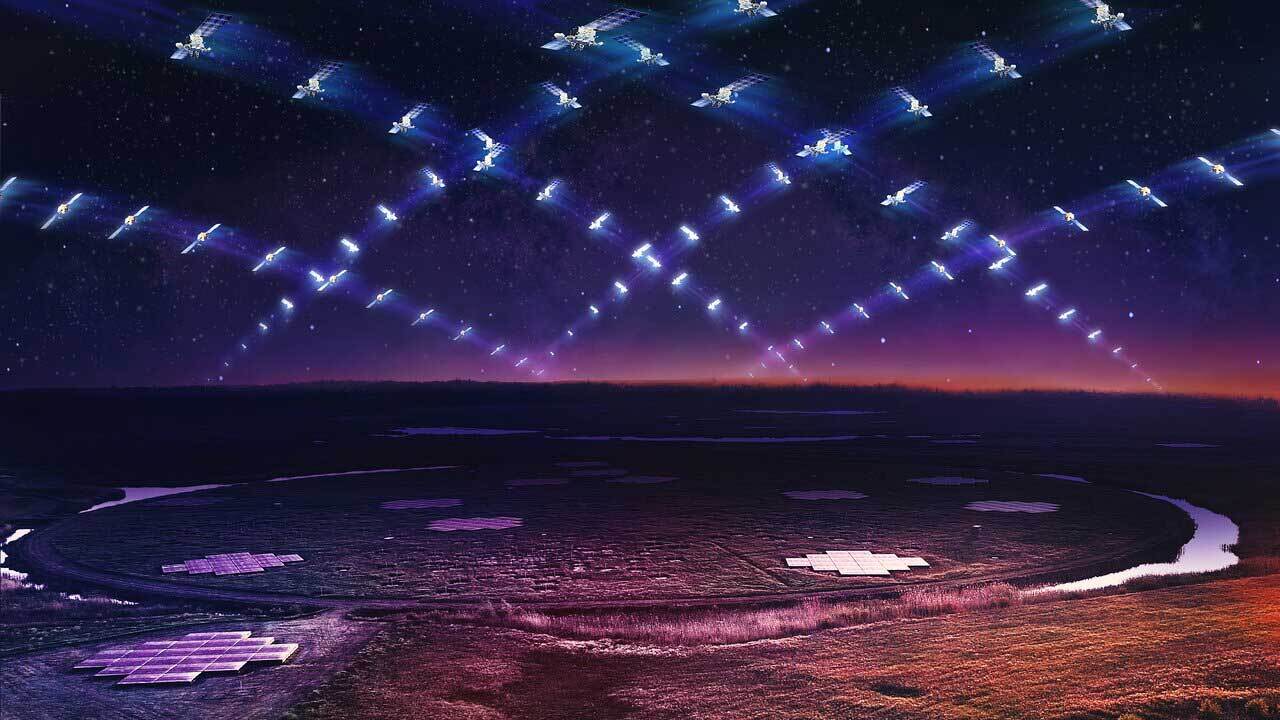12.09.2024
Astronomers and Starlink engineers have developed a technique to significantly reduce satellite radio pollution affecting astronomical observations.
Due to the rising number of satellites, astronomers may soon be unable to carry out detailed, high-quality radio observations. However, the National Science Foundation’s National Radio Astronomy Observatory (NSF NRAO) and SpaceX have jointly developed techniques to help avoid the worst-case scenario.
Just as light pollution obscures the night sky in visible light, artificial radio transmissions shroud faint astronomical radio sources like galaxies, the silhouettes of black holes, and newly formed stars. That’s why radio telescopes are located in radio-quiet zones, astronomical havens where ground-based radio transmissions are restricted to avoid affecting sensitive equipment. One such place is the National Radio Quiet Zone in Virginia, which contains the Green Bank Observatory.
However, quiet zones are vulnerable to satellites that use radio waves to transmit information to the ground. Existing laws do not protect these zones from satellite transmissions and, with more satellites orbiting Earth year by year, it’s becoming increasingly challenging to manage such radio interference.
The advent of large communication satellite networks, such as SpaceX's Starlink, has significantly increased the number of active satellites. According to projections, companies and governments will place tens of thousands of satellites in orbit by the end of the decade. Soon there may not be a single location on Earth unspoiled for radio astronomy.

Since 2019, astronomers have worked together with companies and regulators to develop solutions that benefit all parties involved. One of the positive outcomes is the successful collaboration between NSF NRAO and SpaceX.
A key part of the solution is real-time data sharing between satellites and telescopes. An autonomous system has been set up to inform satellites about the current observations of the telescopes, including the direction in the sky in which a particular telescope is pointing and the radio frequency at which it is observing. Satellites flying near that region can then either momentarily redirect their transmission or shut it down altogether to avoid interference.
Scientists have tested this technique in two separate experiments using the Green Bank Telescope and have demonstrated its feasibility.

NRAO / AUI / NSF
"My immediate reaction is that this is a significant step in the right direction," says Federico Di Vruno, the Square Kilometre Array Observatory’s spectrum manager and co-director of the International Astronomical Union’s Centre for the Protection of the Dark and Quiet Sky from Satellite Constellation Interference (IAU CPS). "The NRAO team and SpaceX have proven that beam avoidance is implementable and that it has a noticeable impact on received radio frequency interference by a radio telescope."
The details of this type of measure still need to be refined. For now, the agreement involves only NRAO facilities; however, SpaceX is in discussions with other observatories in the U.S. and beyond to expand the technique’s implementation. For it to be truly effective, other satellite companies and governments will need to adopt it as well.
But even with successful mitigation measures, some scientific studies will become more challenging to conduct. "Radio frequency interference cleaning will need to be more aggressive, and observations will have to be longer," says Di Vruno. This technique also won’t solve the issue of unintentional satellite radio transmissions caused by electronics, which contaminates other parts of the radio spectrum — work on that is ongoing.
Quelle: Sky&Telescope
